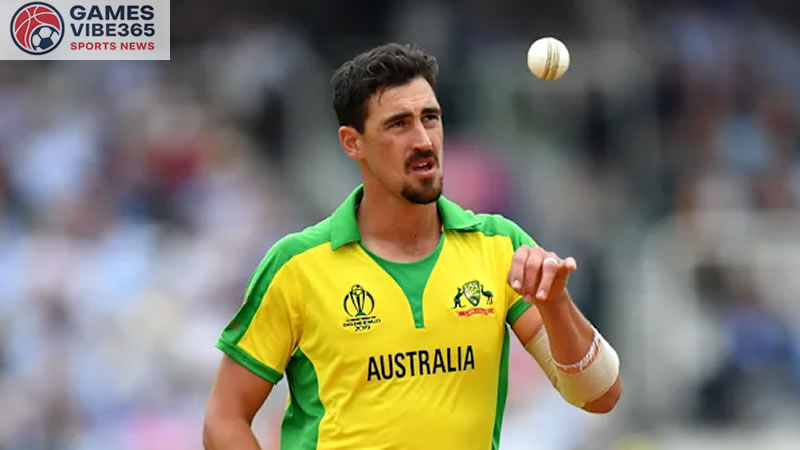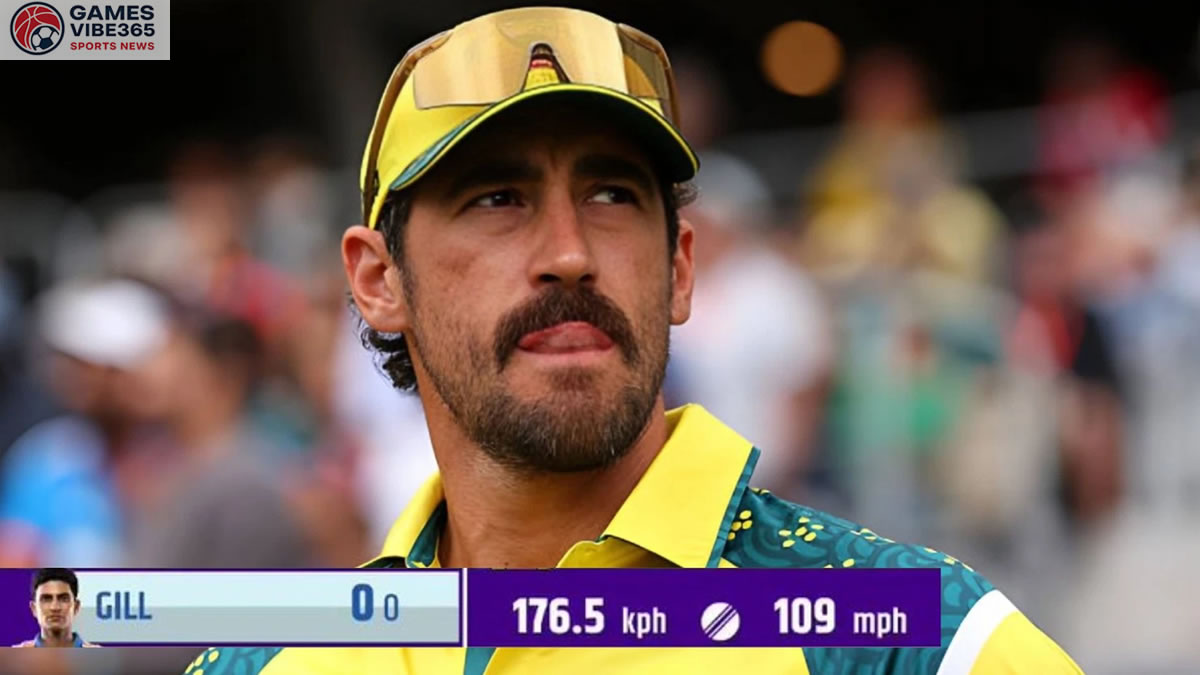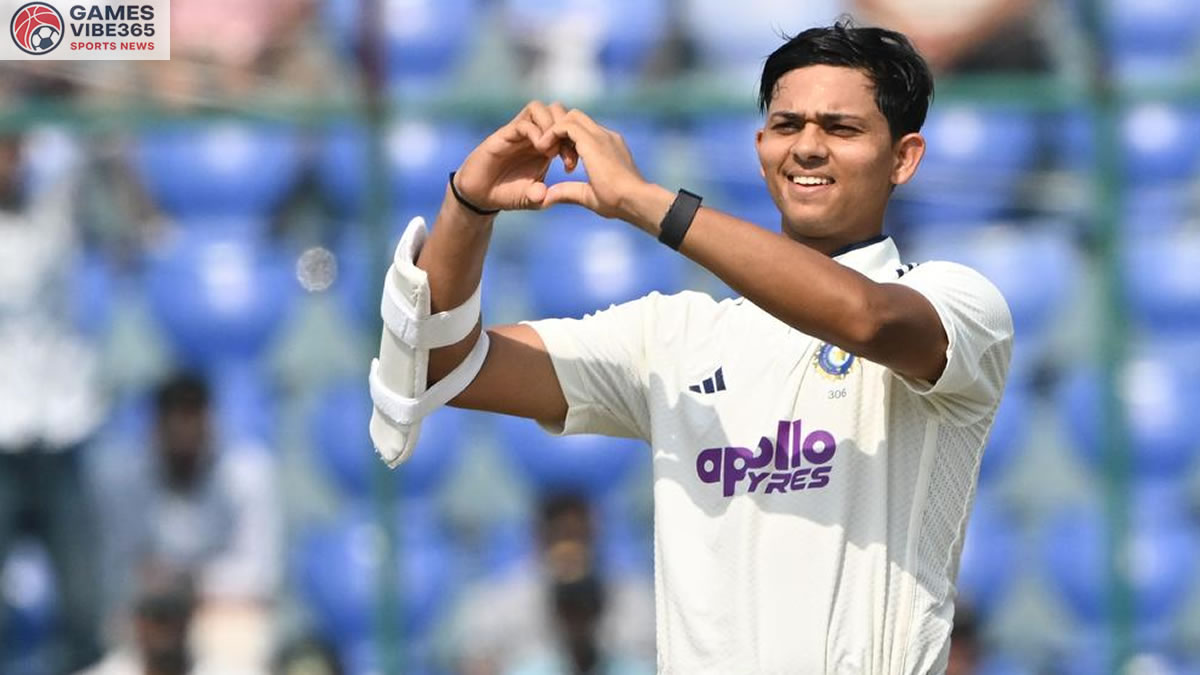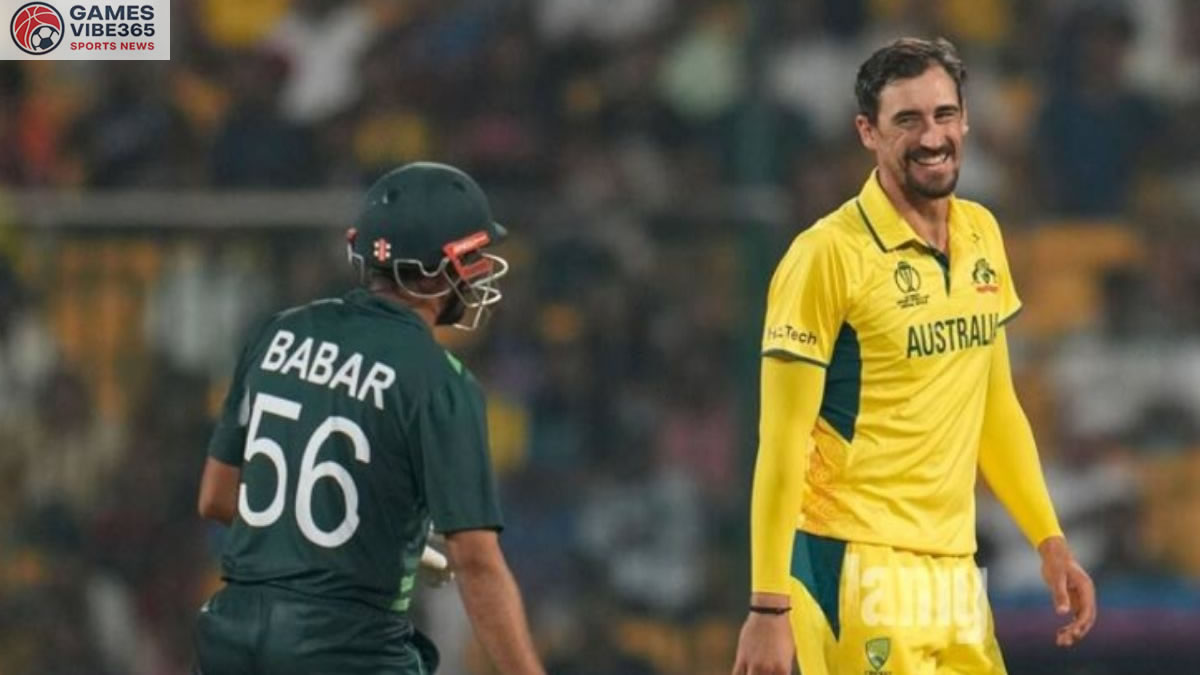Cricket fans around the world were left in disbelief on Sunday after a speed reading from the Perth Cricket Stadium suggested that Australia’s premier fast bowler, Mitchell Starc, had bowled a delivery clocked at an astonishing 176.5 km/h during the first ODI against India.
The number instantly sent shockwaves across social media, sparking debates and memes as fans wondered whether Starc had just eclipsed Shoaib Akhtar’s legendary 161.3 km/h record — a mark that has stood unchallenged for more than two decades.
But was it real? Let’s break down what really happened.
The Ball That Sent Shockwaves Through the Cricket World
In the opening over of India’s innings, Starc’s fiery first ball to Rohit Sharma appeared to scream past the Indian captain’s bat. Moments later, the stadium’s speed gun flashed 176.5 km/h, instantly triggering gasps and cheers from the crowd.
Within seconds, cricket fans and commentators were abuzz online, speculating that Starc might have rewritten cricket history. But the celebration didn’t last long — and for good reason.
The Reality: A Speed Gun Malfunction
Soon after the delivery, officials and broadcasters confirmed that the incredible reading was the result of a technical glitch. The speed gun, which tracks the velocity of the ball at the point of release, had malfunctioned, producing an inaccurate reading.

In reality, Starc’s deliveries during the match were consistently in his usual high-140s to low-150s km/h range impressive, but not record-breaking.
This clarification put an end to the brief social media frenzy, restoring Shoaib Akhtar’s record as the fastest delivery in international cricket, a monumental 161.3 km/h rocket bowled against England in the 2003 ICC Cricket World Cup at Cape Town.
Shoaib Akhtar’s Record Still Reigns Supreme
Known as the “Rawalpindi Express,” Shoaib Akhtar’s feat remains one of the most iconic moments in cricket history. His 161.3 km/h thunderbolt wasn’t a one-off throughout his career, Akhtar was consistently clocked above 150 km/h, often terrorizing batsmen with his pace and aggression.
What makes Akhtar’s record so remarkable is that it was achieved without modern training facilities, biomechanics labs, or advanced speed-tracking technologies that today’s cricketers have at their disposal. His raw athleticism and fierce run-up made him a phenomenon unlike any other.
To this day, no bowler not Brett Lee, Shaun Tait, Jofra Archer, or Mitchell Starc has officially breached that barrier.
Starc’s Fiery Spell Still Made an Impact
Despite the controversy surrounding the speed reading, Starc was still a key performer for Australia. The left-arm quick struck early, dismissing Virat Kohli for a duck, a huge breakthrough that immediately swung momentum in Australia’s favor.
In the rain-affected 26-over-per-side contest, India managed to post 137 runs, thanks to KL Rahul’s 38 off 31 balls, which included two fours and two sixes. However, Australia’s disciplined bowling and fielding made scoring difficult throughout the innings.
Starc ended his six-over spell with figures of 1 for 22, maintaining tight lines and generating uncomfortable bounce on the lively Perth surface.
A Brief Look at the Playing XIs
India: Rohit Sharma (c), Shubman Gill, Virat Kohli, Shreyas Iyer, KL Rahul (wk), Axar Patel, Washington Sundar, Nitish Reddy, Harshit Rana, Arshdeep Singh, Mohammed Siraj
Australia: Travis Head, Mitchell Marsh (c), Matt Short, Josh Philippe (wk), Matt Renshaw, Mitch Owen, Cooper Connolly, Mitchell Starc, Nathan Ellis, Matt Kuhnemann, Josh Hazlewood
Why Speed Still Captivates Cricket Fans
There’s something mesmerizing about sheer pace in cricket. From the days of Jeff Thomson and Malcolm Marshall to modern icons like Starc and Archer, speed has always been cricket’s most thrilling weapon.
The sight of a 150+ km/h delivery zipping past a world-class batsman creates an adrenaline rush unmatched by any other moment in the sport. It’s why speed guns, though imperfect at times, continue to fascinate audiences.
Yet, as seen in Perth, technology isn’t infallible. Misreadings can and do happen often because of environmental factors, calibration errors, or interference in radar systems.
Could Starc Ever Break the Record for Real?
While Starc’s 176.5 km/h reading turned out to be a glitch, few would deny his capability of generating extreme pace. At his best, he regularly touches 155 km/h, making him one of the fastest bowlers of his generation.
However, crossing the 161 km/h threshold may be nearly impossible with today’s workload management and injury prevention standards. Modern cricket places greater emphasis on accuracy, swing, and longevity over raw speed.
Still, if anyone were to challenge Akhtar’s record in the near future, Starc with his smooth action, tall frame, and natural rhythm — remains among the top contenders.
Social Media Reactions
The viral moment quickly made headlines across X (formerly Twitter) and Instagram, with fans reacting humorously to the absurdly high speed reading.
One fan joked, “Starc just bowled a delivery faster than my WiFi connection,” while another wrote, “Shoaib Akhtar can finally sleep peacefully — record still safe.”
The incident also sparked debates about the reliability of broadcast technology, with several analysts calling for improved calibration and double-verification systems before public display.
Final Verdict
So, did Mitchell Starc break Shoaib Akhtar’s record?
No the record still firmly belongs to the Rawalpindi Express.
Starc’s supposed 176.5 km/h thunderbolt was simply a technical error, though it did give cricket fans around the world a few minutes of pure excitement and nostalgia.
As for Starc, even without the record, his fiery spell against India was a reminder of why he remains one of the most feared fast bowlers in world cricket.
And until someone truly crosses that 161.3 km/h barrier, Shoaib Akhtar’s legacy as the fastest man in cricket history remains untouched.
Also Read: John Cena Confirms WWE Retirement Date Puts Rumors to Rest







